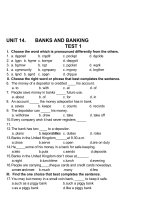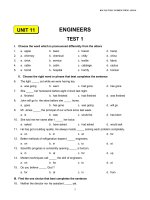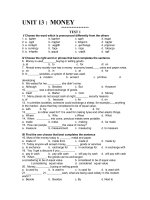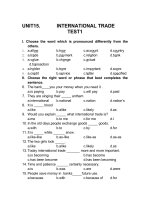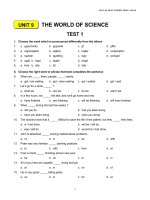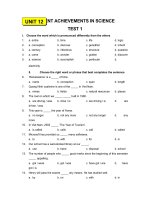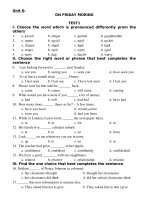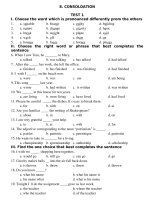Lung Function Assessment M.C.F.Pain
Bạn đang xem bản rút gọn của tài liệu. Xem và tải ngay bản đầy đủ của tài liệu tại đây (193.21 KB, 19 trang )
Lung Function Assessment
M.C.F.Pain
Ventilation
bulk flow
distribution
Ventilation/blood flow relationships
Alveolar-capillary diffusion
Blood gas transport
Tissue respiration
Control of breathing
Influence of dead space on alveolar ventilation
VE
f
litres
VT
mls
DS
mls
VA
litres
5.0
10
500
150
350 x 10=3.5
5.0
20
250
150
100 x 20=2.0
Blood oxygen transport
1 gram Hb can carry 1.39 mls of oxygen
Oxygen Capacity = Hb x 1.39 + physically dissolved oxygen
normally (15 x 1.39 + 0.3=)21.15 mls/100mls
Oxygen content = actual amount of oxygen
Oxygen saturation = oxygen content / oxygen capacity
(normally about 94%)
Oxygen tension-oxygen content relationship expressed
In dissociation curve.
Hb affinity for oxygen expressed as P50 (normally 26.6mmHg)
“Stingy haemoglobins, CO shift curve to left (low P50), chronic
hypoxia shifts curve to right (high P50)
Respiratory muscle weakness
Forced expiration or inspiration against
almost occluded airway.
MIPS about 80 mmHg
MEPS about 100 mmHG
Paralysed diaphragm- postural fall in V.C.
Lung Function during exercise
Six minute walk test. Simple and informative
Distance travelled -normally over 500 metres
Observation of performance
Dyspnoea score (Borg scale) before and after
Time to recover
Oxygen saturation (oximetry) before, during and after
(fall in saturation= worsening V/Q relationships)
Formal cardiopulmonary exercise study
Monitor HR, ECG, Gas Exchange under progressively
increasing work load.
Fitness-aerobic-> anaerobic point. VO2max.
Inappropriate ventilatory response
Inappropriate circulatory response
John B. West on U tube
Series of lectures on respiratory
physiology from UCSD.
